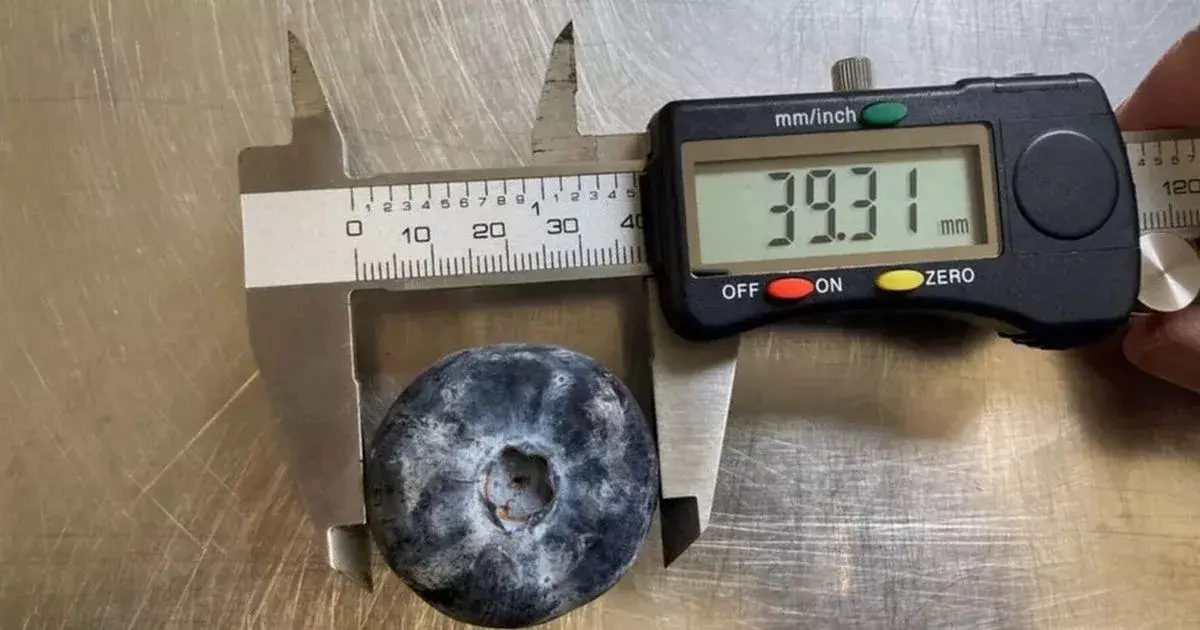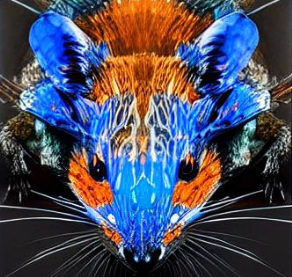Farmers in Australia were left “stoked” when they noticed that among the blueberries they picked, there was one as big as a golf ball and weighing significantly more than average.
The giant blueberry, which is 39.31mm wide and weighs 20.4 grams - much more than the average of between 1 gram and 3.5 grams - was picked at a farm in Corindi, New South Wales, in November last year. On Tuesday, Guinness World Records publicly declared it the biggest blueberry in the world - a title previously held by a 16.2 grams berry with a diameter of 36.33mm grown in Western Australia.
I’m all my years of working with produce, I can say with certainty that the bigger the blueberry, the shittier, grittier, and more mashed potato-like the inside… But I’ll be damned if stoked isn’t the exact feeling I get every time I come across a monster.
Generally speaking, I’m with you, but there is some new variety that’s come out recently that are both giant, and delicious. They’re more expensive than the small ones so I was doubly skeptical but I was blown away by the flavor.
I require knowledge of this blueberry. Can the plant be bought? Can i grow my own giant blueberries?!
This isn’t the original brand that I had, but these are close and more or less comparable, which was incredibly shocking for me given I got them at a Walmart https://www.walmart.ca/en/ip/blueberries-xl/6000204263062
I bet it tastes like shit. The difference between wild blueberries (Vaccinium myrtillus) and something like a blue huckleberry (Vaccinium corymbosum) is like a night and day. The bigger the berry the blander the taste. This applies to strawberries aswell. Wild strawberries (Fragaria vesca) are significantly sweeter tasting than garden strawberries.
Wild strawberries taste like tiny pieces of strawberry flavored hay. They’re tiny and they don’t taste good. That’s why we farm strawberries.
Vaccinium Corymbosum is just the bush form of the blueberry plant, which occurs naturally (in my yard) and in much of North America. It’s not Blue Huckleberry.
Blue Huckleberry is unrelated, and is actually Gaylussacia Frondosa.
Cascade Bilberry is a member of the Blueberry family and is colloquially called Cascade Huckleberry, or Vaccinium Deliciosum.
Vaccinium Myrtillus is the European variant which is also naturally occuring, and is more commonly called just Bilberry.
Neither is more domesticated, both are used in farming depending on location.
The effect you’re thinking of is the difference between chemical ripening and sun ripening. White Strawberries and pale blueberries (with poor flavor profiles) are signs of chemical ripening in a warehouse somewhere.
So true. If the ones in the store are all big, I make sure to not buy em.
To eat a blueberry the way I eat an apple… what a dream!
Wear an old shirt.
Sure, but how did it taste?
Who cares how it tastes, how many yards from the tee did it drive?
Splat
Bilberries are the real blueberries. This is just one of those tasteless waterberries.
Imagine gatekeeping fruit.
I wondered about the metric units and then saw it was australia and not US.






